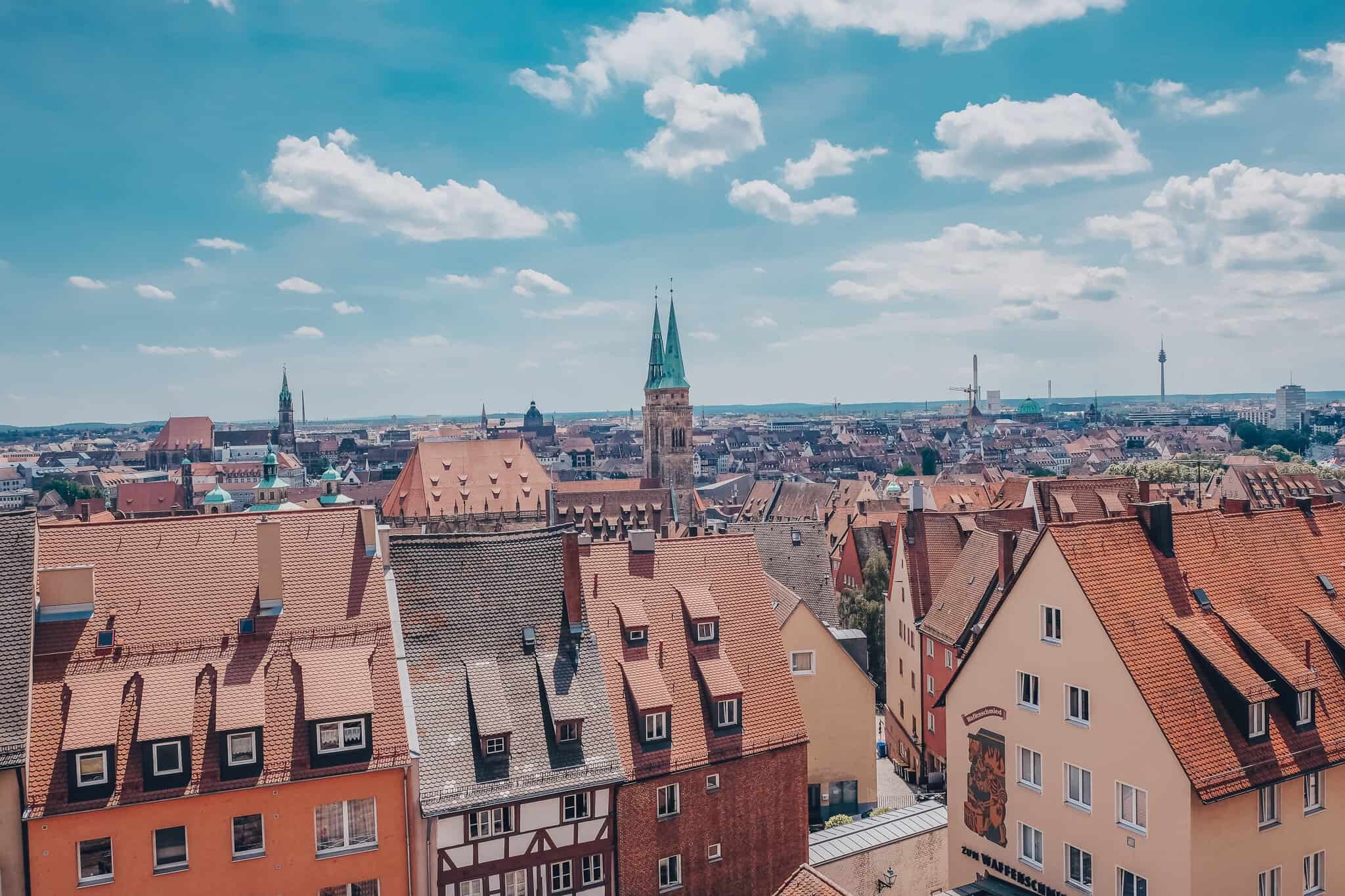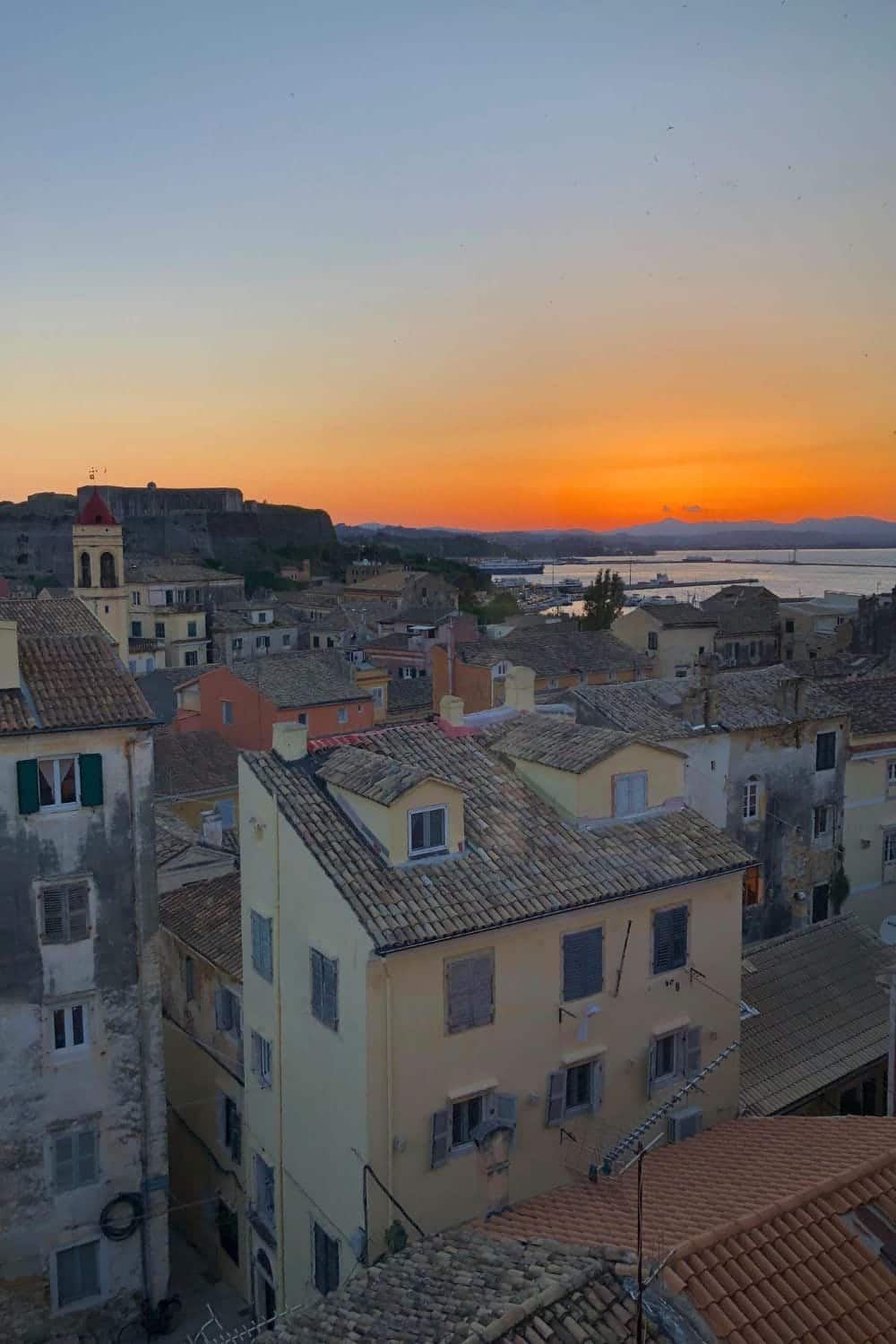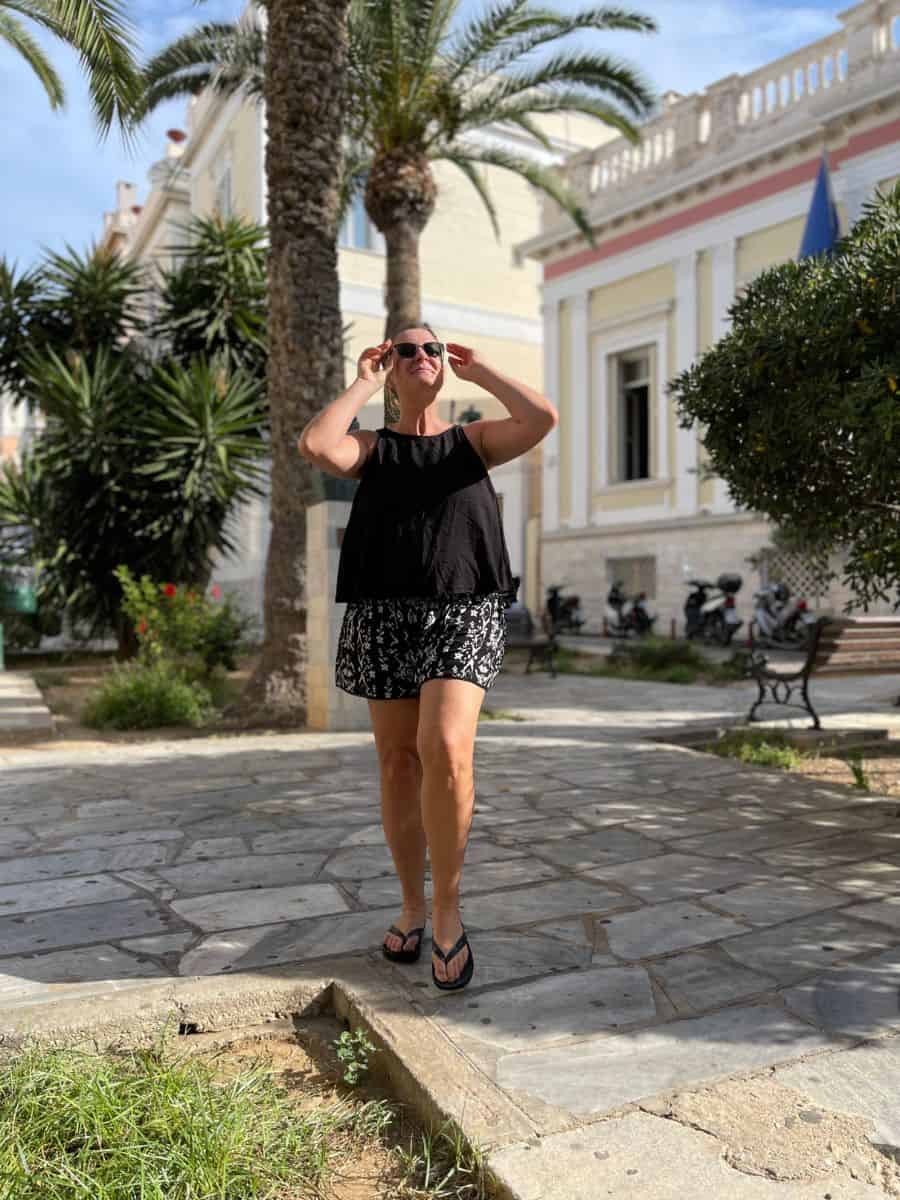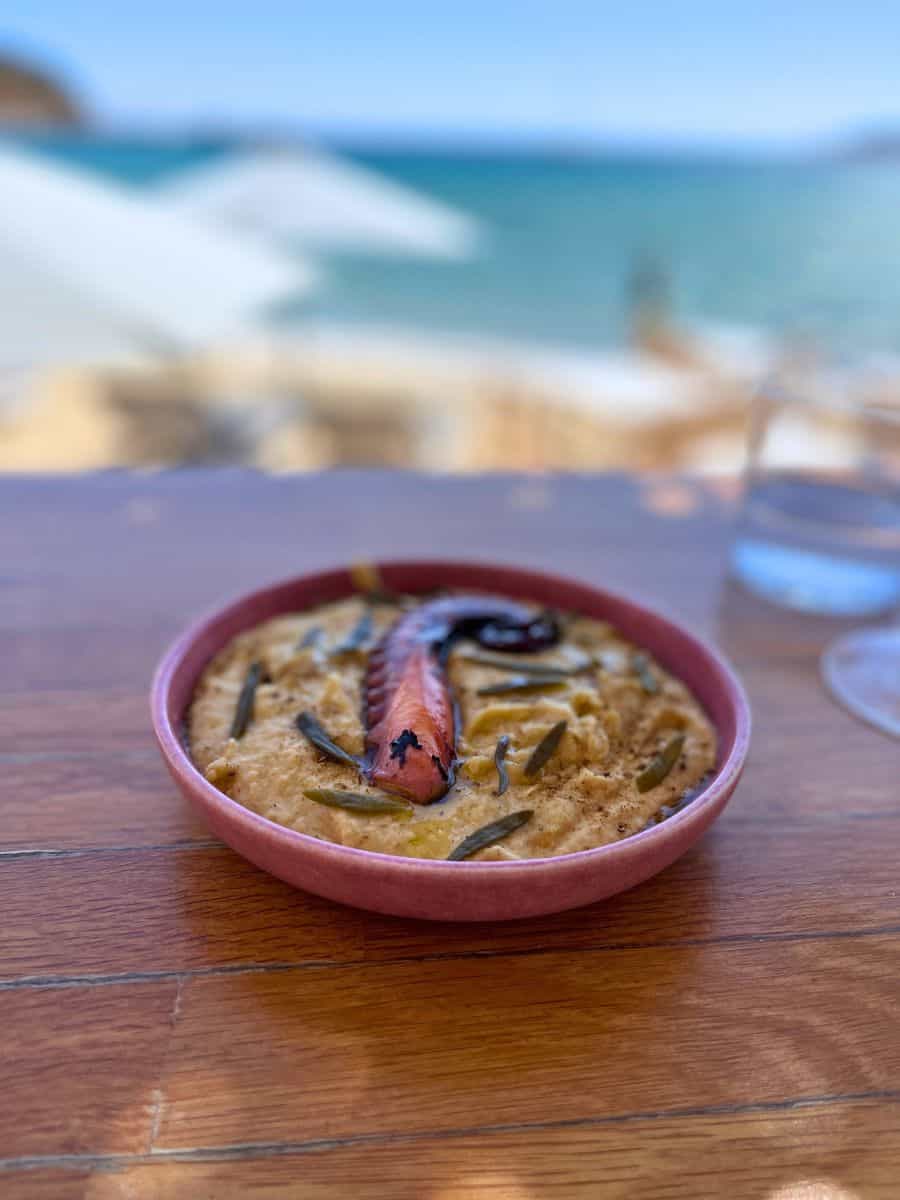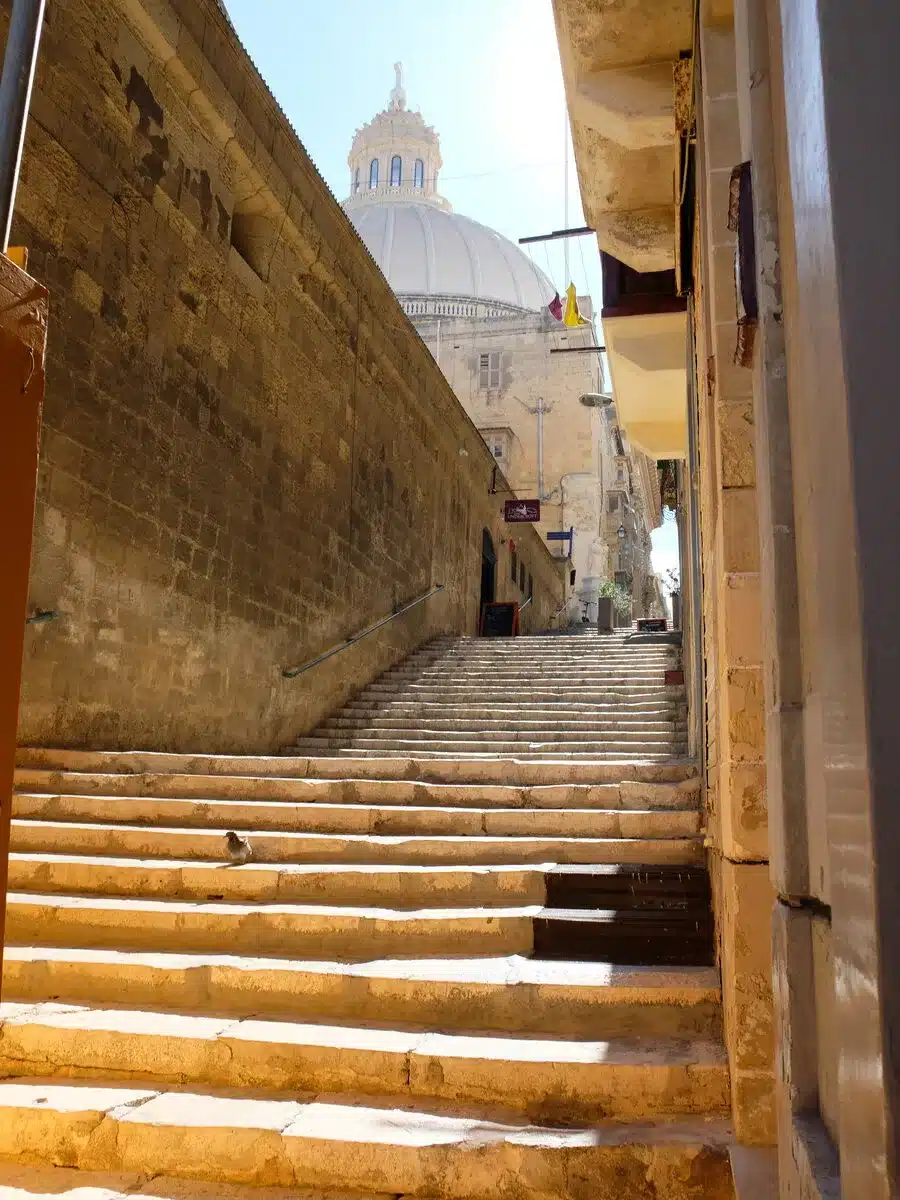A Solo Woman Traveling uses human-written content that contains affiliate links and is a member of Amazon Services LLC. When you make a purchase on a link, we may receive a small commission. This is at no extra cost to you. See Our Affiliate Policy and Advertiser Disclosure for more info.
If you’re planning to visit the Christmas markets in Europe, the right preparation makes all the difference. Go in unprepared, and you might leave feeling disappointed, and I don’t want that for you. These markets should feel every bit as magical for you as they do for me.
After living in Europe and spending many winters exploring Christmas markets, I’ve learned what works, what doesn’t, and how to make the most of your time.
This guide is packed with practical tips and what to know before visiting Christmas markets in Europe.
Whether you’re exploring solo, traveling with children, or sharing the experience with someone special, these tips will set you up for a magical holiday trip.
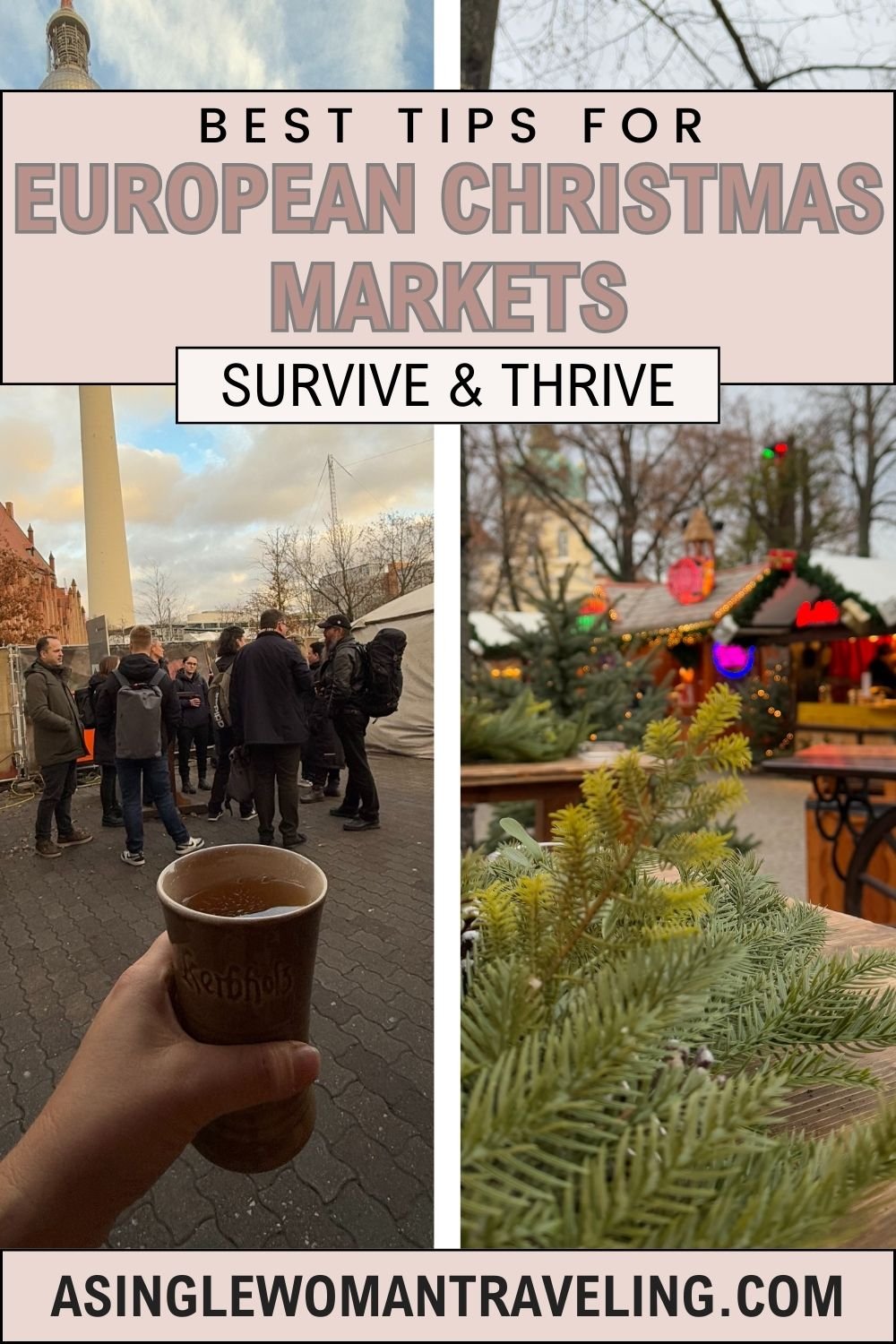

Top 5 Must-Know Tips for Christmas Markets in Europe 🎄✨
- Bring small cash – Some stalls don’t take cards, especially in smaller towns.
- Try more than mulled wine – White wine punch, mead, and cider are delicious twists.
- Go twice – Daytime for shopping, nighttime for the magical lights.
- Weekdays are best – Weekends get packed and less fun solo.
- Scope the mugs – Each market has its own collectible design.

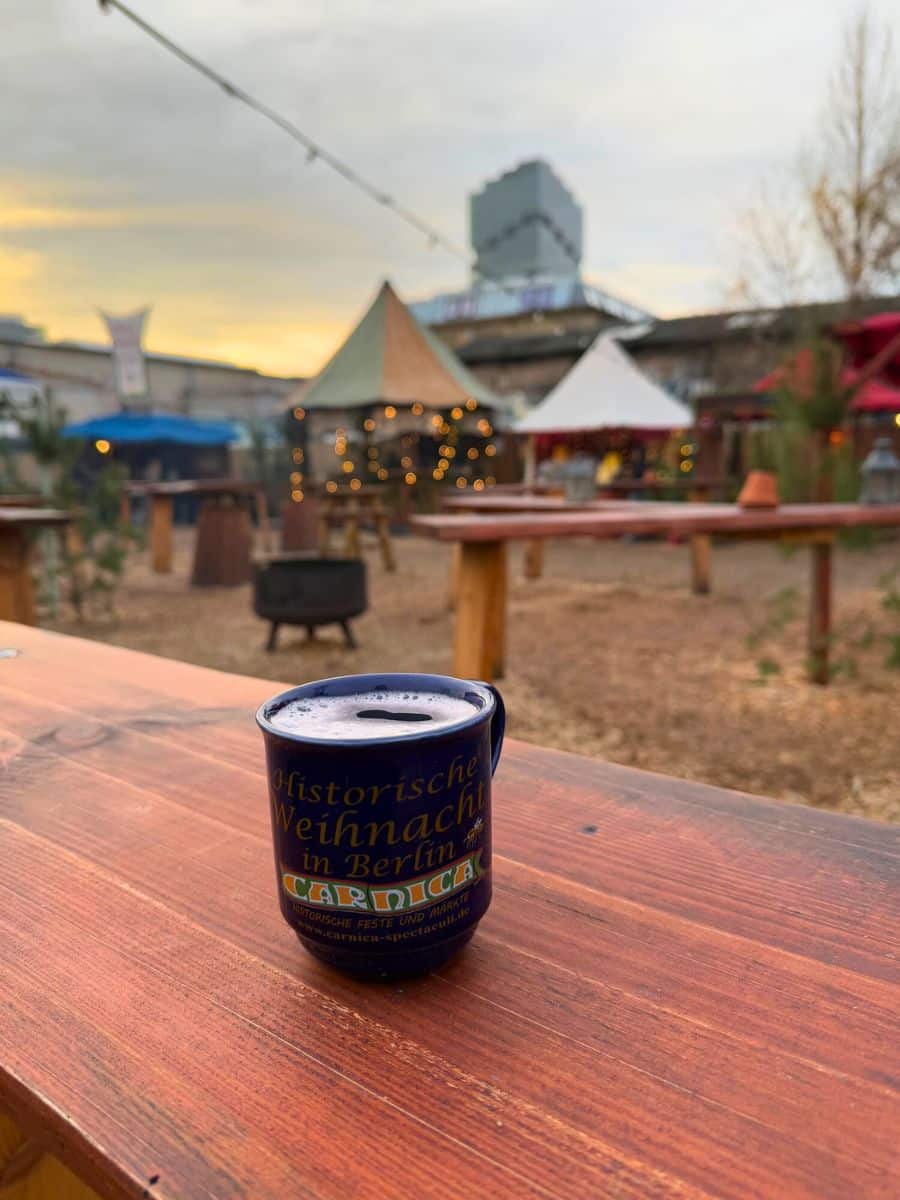
Practical Tips for Enjoying the European Christmas Markets
1) Don’t just plan to see the biggest markets
The famous ones are great, but the smaller or themed markets often feel more local and less crowded.
Example: In Berlin, don’t stop at Alexanderplatz or Charlottenburg Palace. Add more unique picks like the Lucia Market at Kulturbrauerei for a Nordic vibe and my personal favorite, the Heissa Holzmarkt on the Spree for indie artisans.
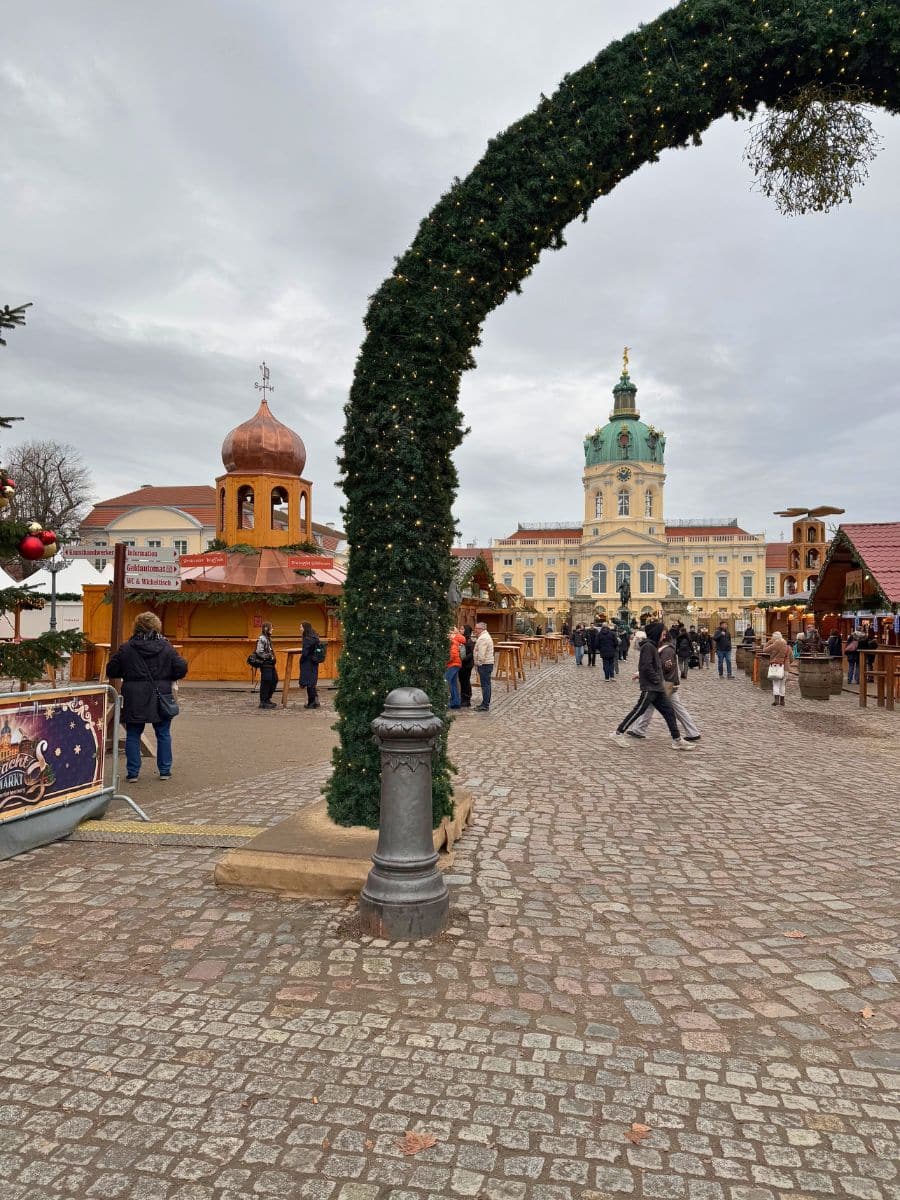

- Poznan Christmas Market– Poland
- Hall in Tirol Advent Market– Austria
- Riquewihr– France
- Heidleberg-Germany
2) Remember, there can be many markets in one city
Big cities often run dozens of markets across different neighborhoods, sometimes 80 to 100 or more. Each has its own personality.
Example: Berlin hosts a huge number of markets, and some are weekend only, like Alt-Rixdorf. Build your plan around what is actually open on your dates.
But it’s not a strict rule that big cities have lots of markets. I went to Paris for the Christmas Markets, and I was disappointed with the lack of choices. This is why research prior to the trip is important.
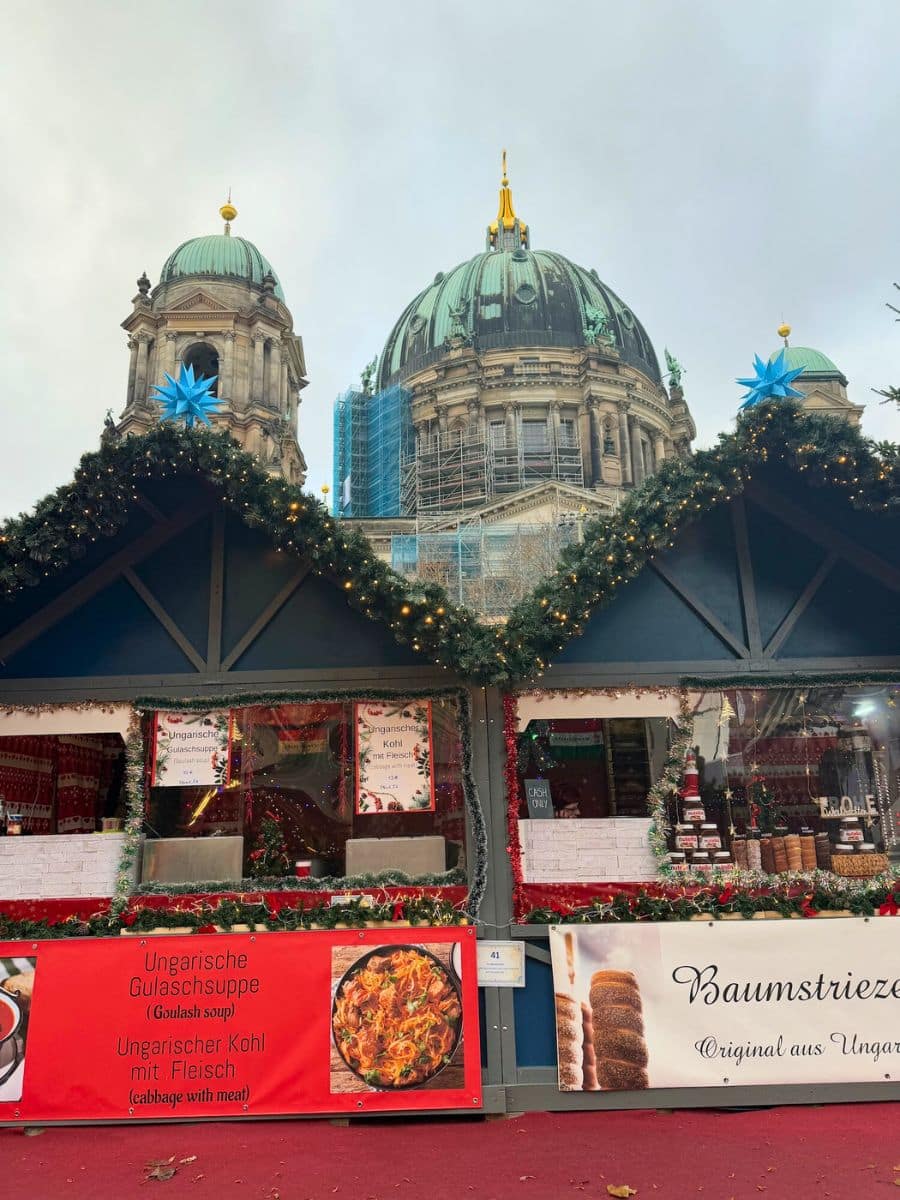
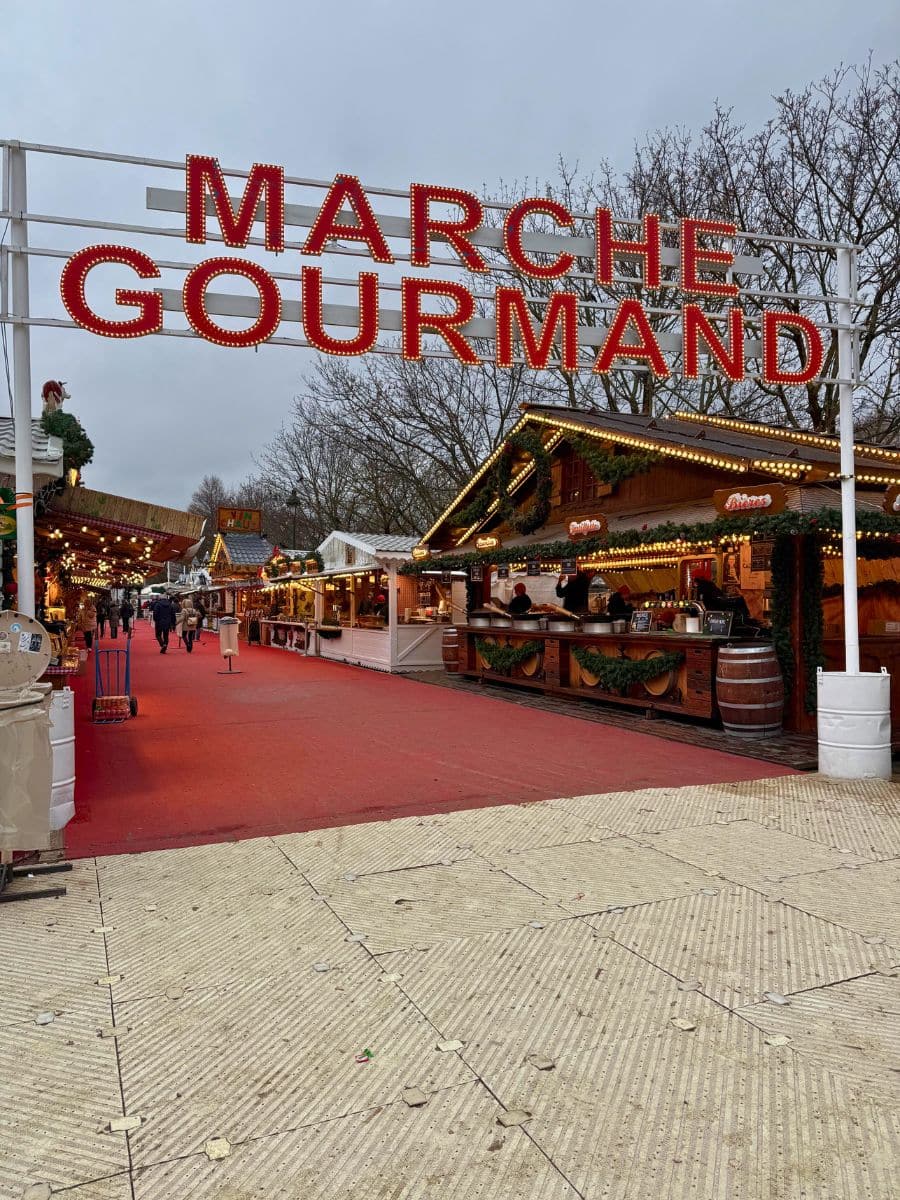
3) Check dates and hours before you go
Opening dates and hours change every year. Some markets close earlier on Sundays or finish on December 24. Verify the current year. Cross-check more than one site and email tourism offices if needed. I noticed some of the local city sites aren’t always updated like you would expect.
Example: Alt-Rixdorf in Berlin typically runs one weekend only, which catches a lot of first-timers off guard.
Look for the official city website to confirm, in for Berlin it’s Berlin.de.
4) Make a list of must-try foods before going
One of the best parts of Christmas markets is the food, but it’s easy to get full too quickly if you don’t pace yourself. Make a mental (or actual) list of must-try treats so you don’t miss the local specialties.
Here are some highlights to look for:
- Netherlands – Oliebollen (Dutch doughnuts), poffertjes (mini fluffy pancakes with powdered sugar), speculaas (spiced cookies), and hot chocolate.
- Germany – Bratwurst, pretzels, roasted chestnuts, and glühwein (mulled wine).
- Austria – Kaiserschmarrn (shredded pancake with powdered sugar), käsespätzle (cheesy noodles), maroni (roasted chestnuts), and punsch (spiced punch).
- Alsace, France – Bredele cookies, flammekueche (thin crust pizza-like dish), bretzels, and vin chaud (spiced wine).
- Poland – Pierogi (dumplings), oscypek (smoked sheep’s cheese with cranberry), kielbasa, and grzane piwo (hot beer with spices).
- Denmark – Æbleskiver (fluffy pancake balls dusted with sugar), gløgg (mulled wine with almonds and raisins), and brændte mandler (caramelized almonds).
- Italy – Panettone, torrone (nougat with nuts), vin brulé (Italian mulled wine), and roasted chestnuts. You’ll find these at the Christmas Markets in Verona!
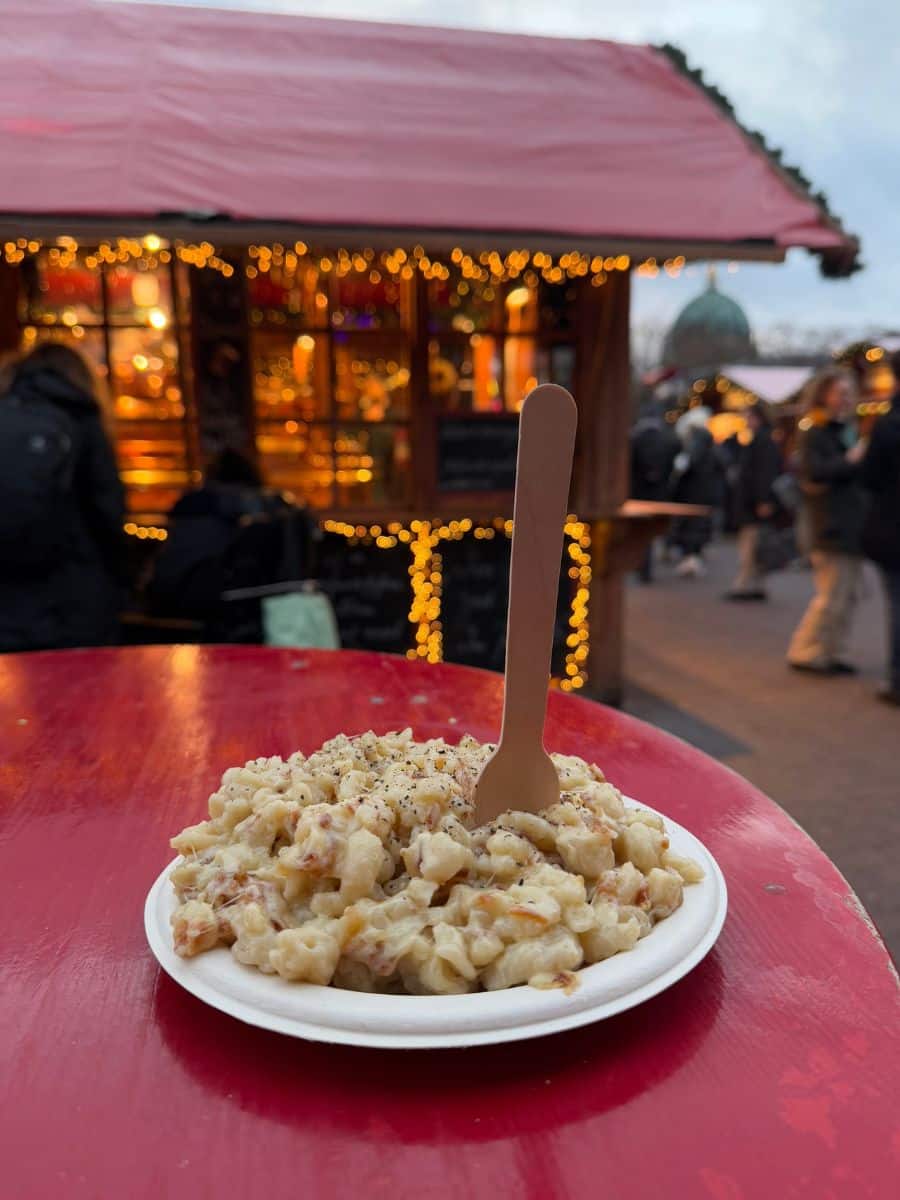
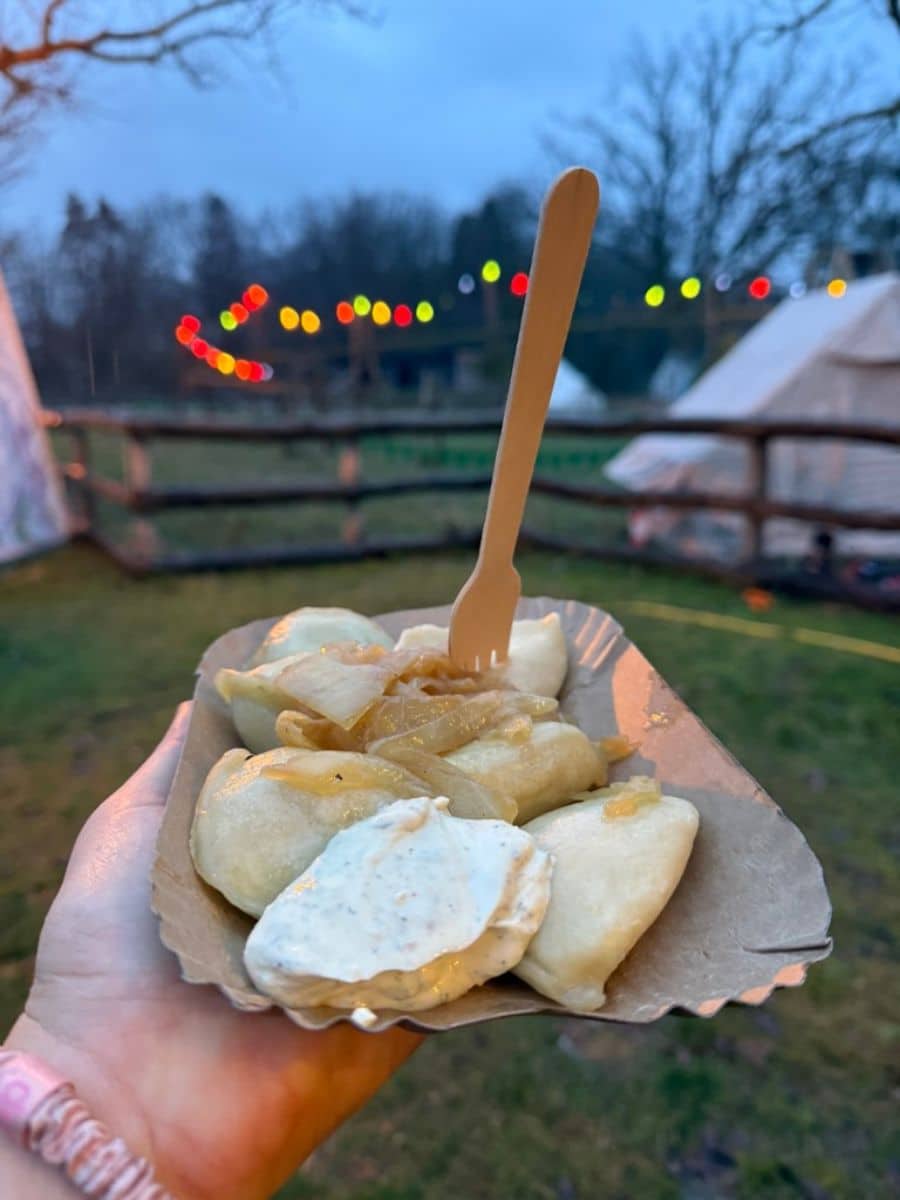
5) Stay at a hotel close to the markets or close to fast transit
Walking distance is ideal, but central areas can be pricey in December. Use credit card points like I do; they can really help. If you stay a little farther out, make sure you have quick transport to the main squares.
Example: In Berlin, a central base makes it easy to bounce between Alexanderplatz, Kulturbrauerei, and Charlottenburg without long rides.
If you didn’t know, you can actually set a filter in booking.com to find hotels within a certain distance of the Christmas Markets, see the picture below.
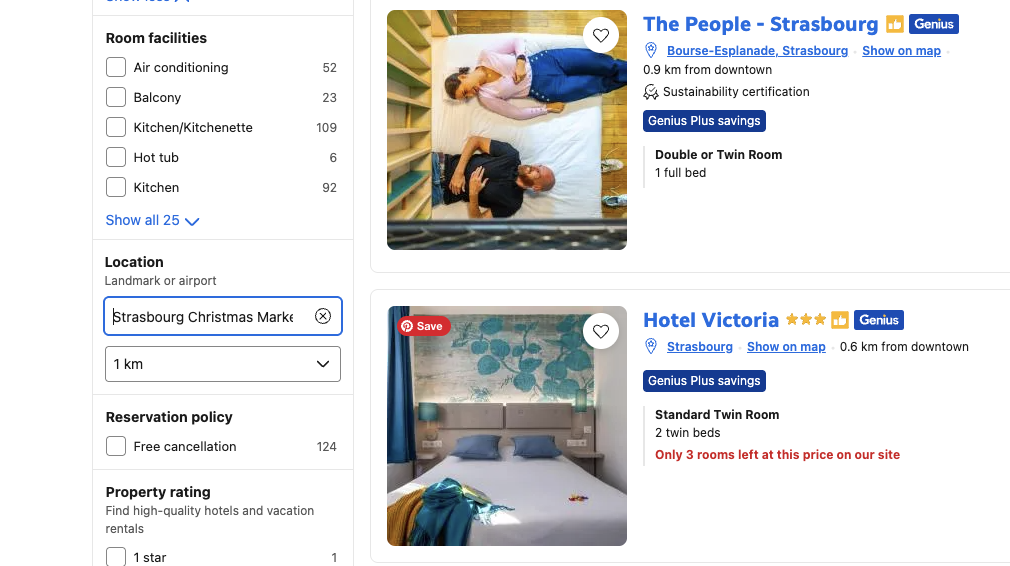
6) Book hotels in advance
Hotels for the Christmas market season sell out fast. Do not wait for the first cold snap to book.
Pro tip: Aim to lock things in by August if you want boutique or walkable. I know it sounds crazy to book that early, but in my experience, things will book up by the start of September, and you will be left with fewer choices.
Below are screenshots showing hotel availability for the Strasbourg Christmas Market as of September 23. On the left, you’ll see properties marked with a red pin that are already booked. On the right, you’ll see the hotels that are still available to reserve.
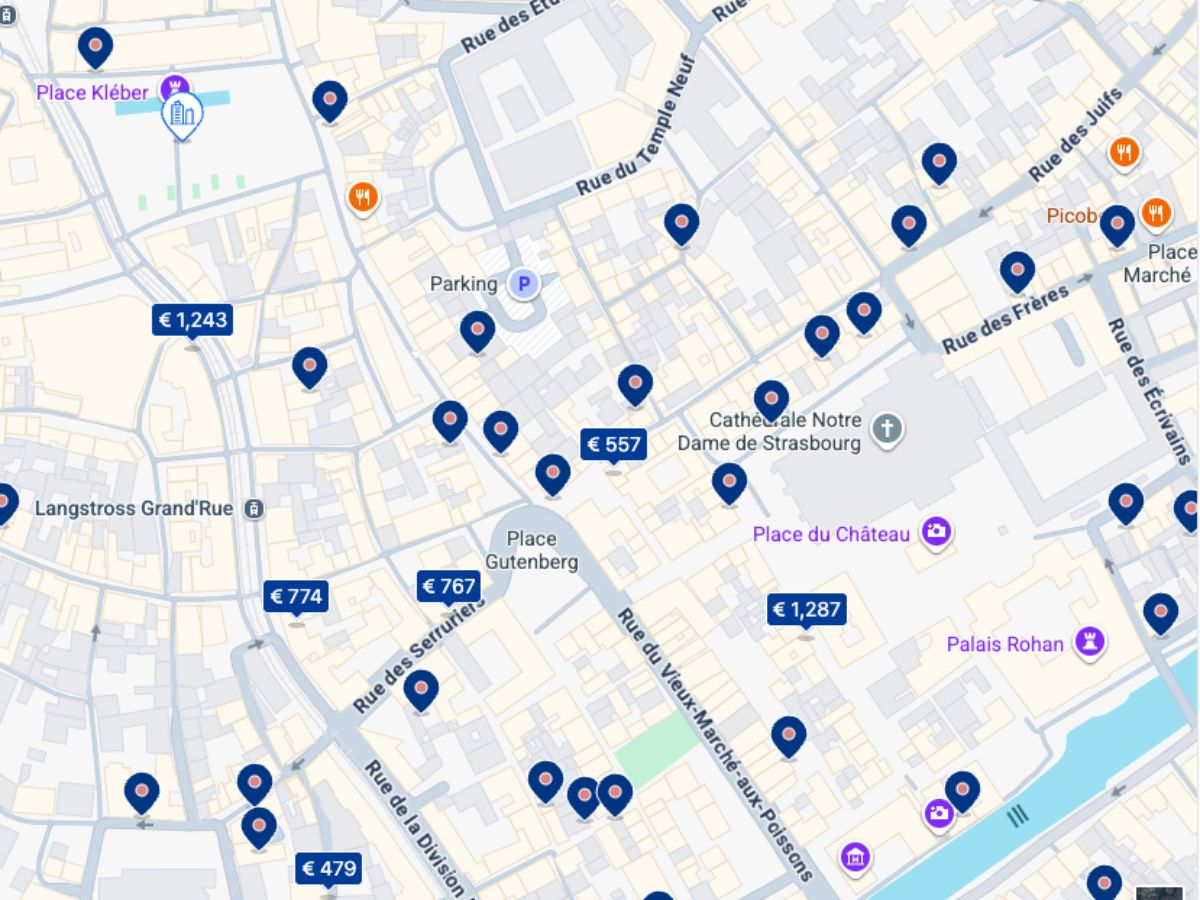
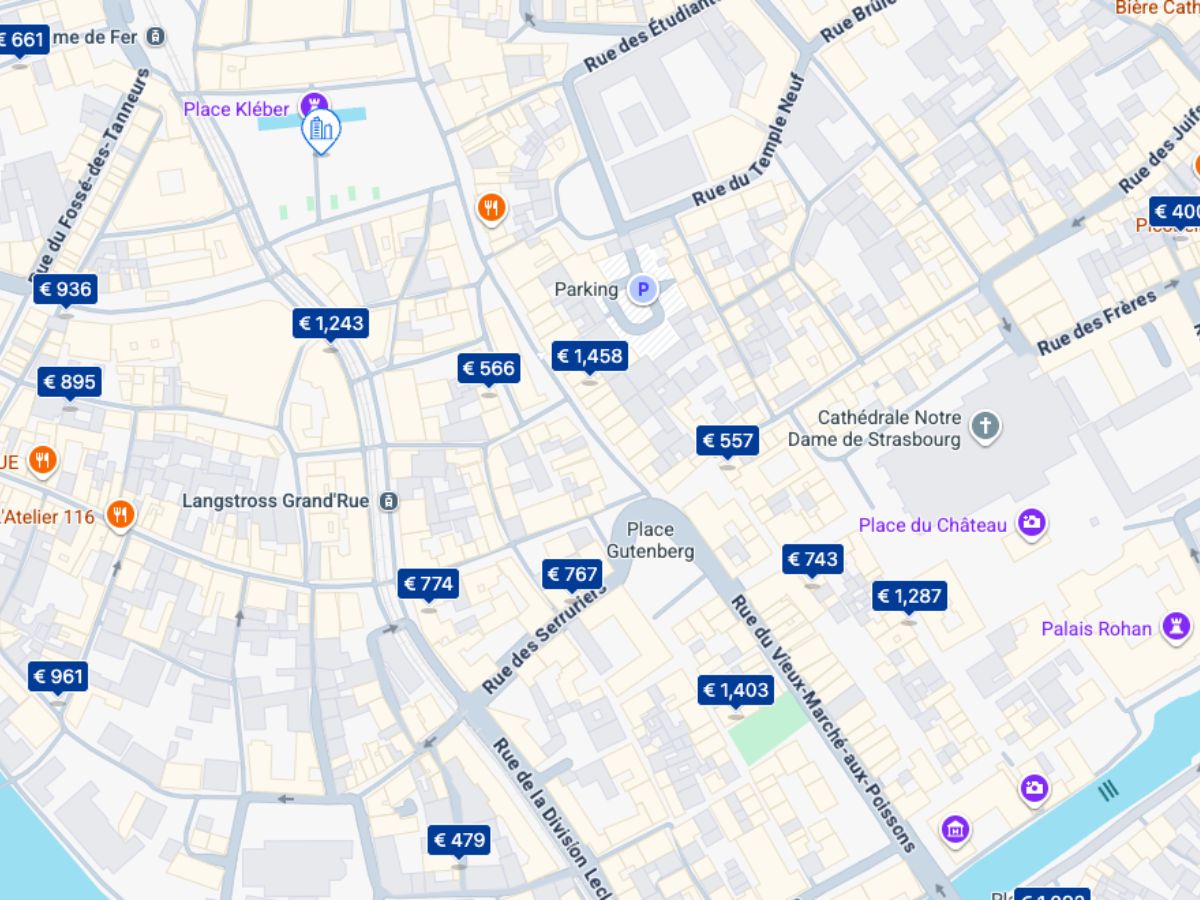
7) Dress warm & wear the right shoes
These markets are outdoors, and you will be standing a lot. Layers are key.
Packing list example: Thermal leggings, merino socks, scarf, hat, warm gloves, and a real winter coat.
Early December can be wet in many European cities. Cold, damp feet will ruin the night.
Example: Waterproof ankle boots with a good grip handle cobblestones and light rain without fuss.
8) Pack with souvenirs in mind
A little tip if you planning to buy souvenirs at the markets. Ornaments, mugs, and hand-blown glass are breakable. Leave space or bring a foldable bag, and cushion the fragile pieces. I like this backpack for its durability.
Pro tip: Slip a few wine-bottle sleeves or bubble pouches into your suitcase to protect mugs.
9) Factor in transit time between cities or countries
PRO TIP: Do not overschedule your route. Travel days can eat up more time than you think.
Example: Berlin to Munich by ICE is roughly four and a half hours on average, faster on some services. Break it up with a night in Bamberg, a smaller town that has some adorable Christmas markets. If you don’t have a lot of time, you might just have to choose between Berlin and Munich.


Need More Planning Insights?
Read my complete guide to planning a trip to the Christmas Markets in Europe.
Tips for When You’re at the Christmas Markets in Europe
- Cash is still king– Many markets now take cards, but some stalls still prefer cash. In smaller towns or at busy drink stands, a few euros in coins or small bills go a long way. Example: In Heidelberg, the main stalls took cards, but the little wooden huts selling pastries were cash-only. Also, public toilets are also always going to require cash, so have some coins!

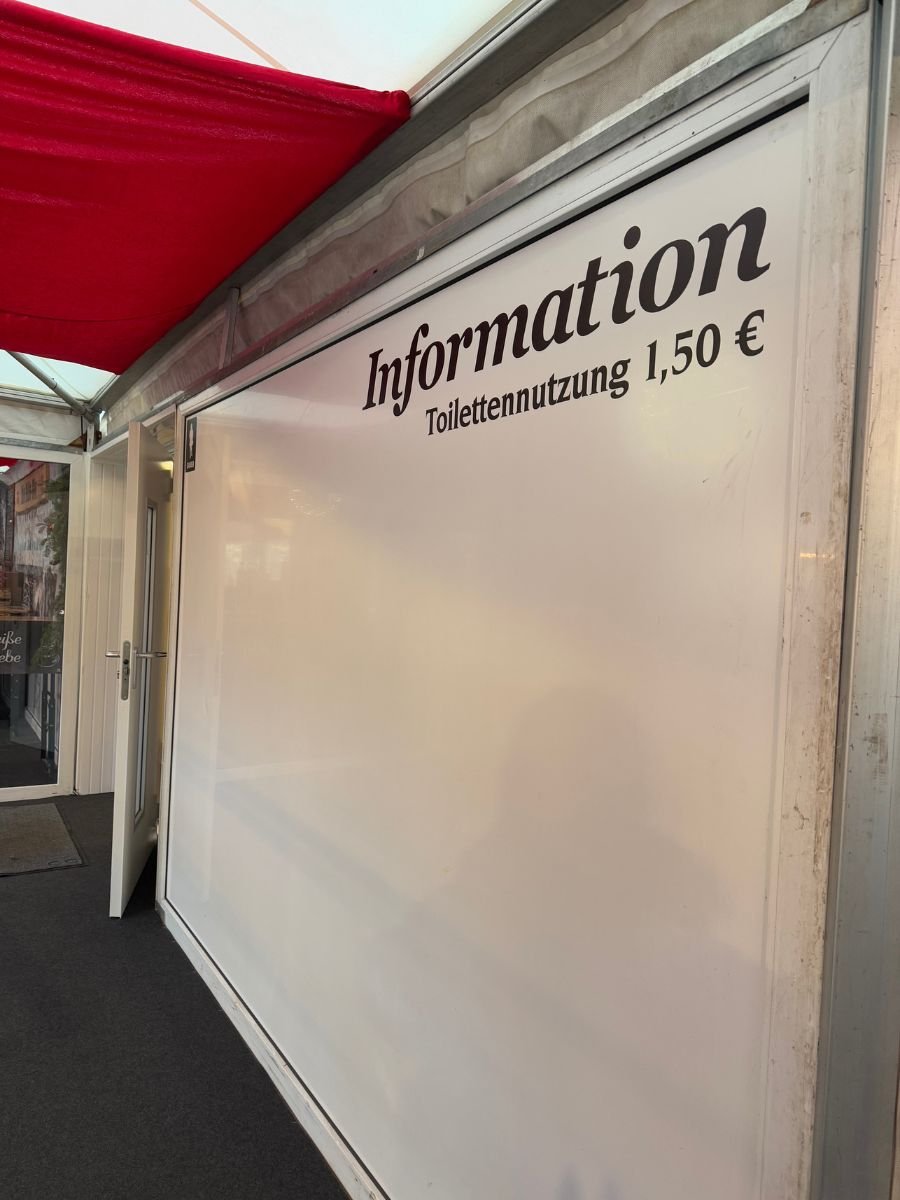
2. You can take the mug
Your drink comes in a reusable mug with a deposit. Return it to get your money back, or swap it for a clean one if you want to keep it as a souvenir. Don’t just leave it on the table! Each market has its own collectible mug, and some cities offer multiple designs. Example: In Leipzig, one square had blue mugs, another red. I picked my favorite before ordering.

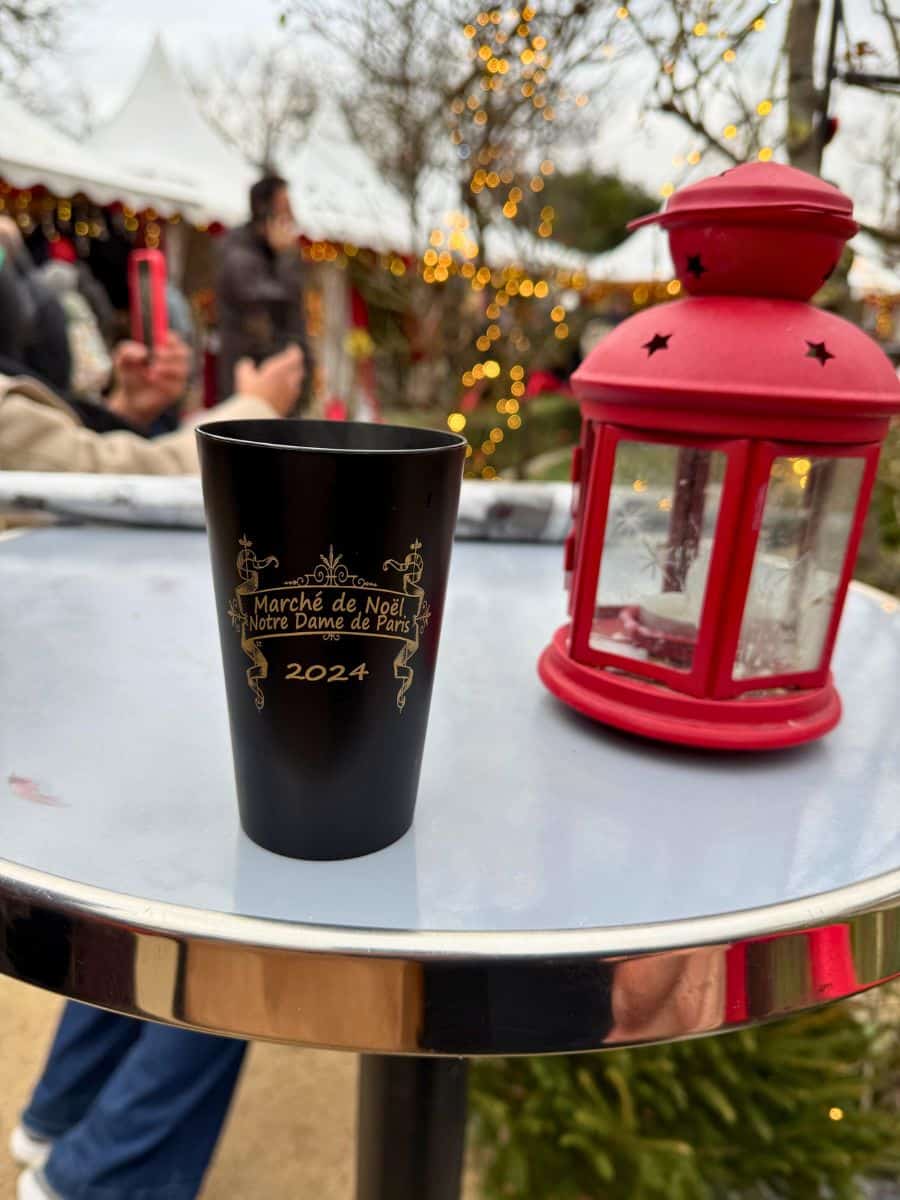
3. Don’t just drink the mulled wine
Glühwein is classic, but there are fun variations. Example: In Strasbourg, I loved the white mulled wine with citrus, and in Berlin, I tried mead, a honey drink that was cozy but strong.
4. You won’t find healthy food & it’s not that cheap
Market food is tasty but heavy and pricey. I had the flammekuchen, which is basically a thin-crust pizza, and it cost €9 for a portion that wasn’t very big.

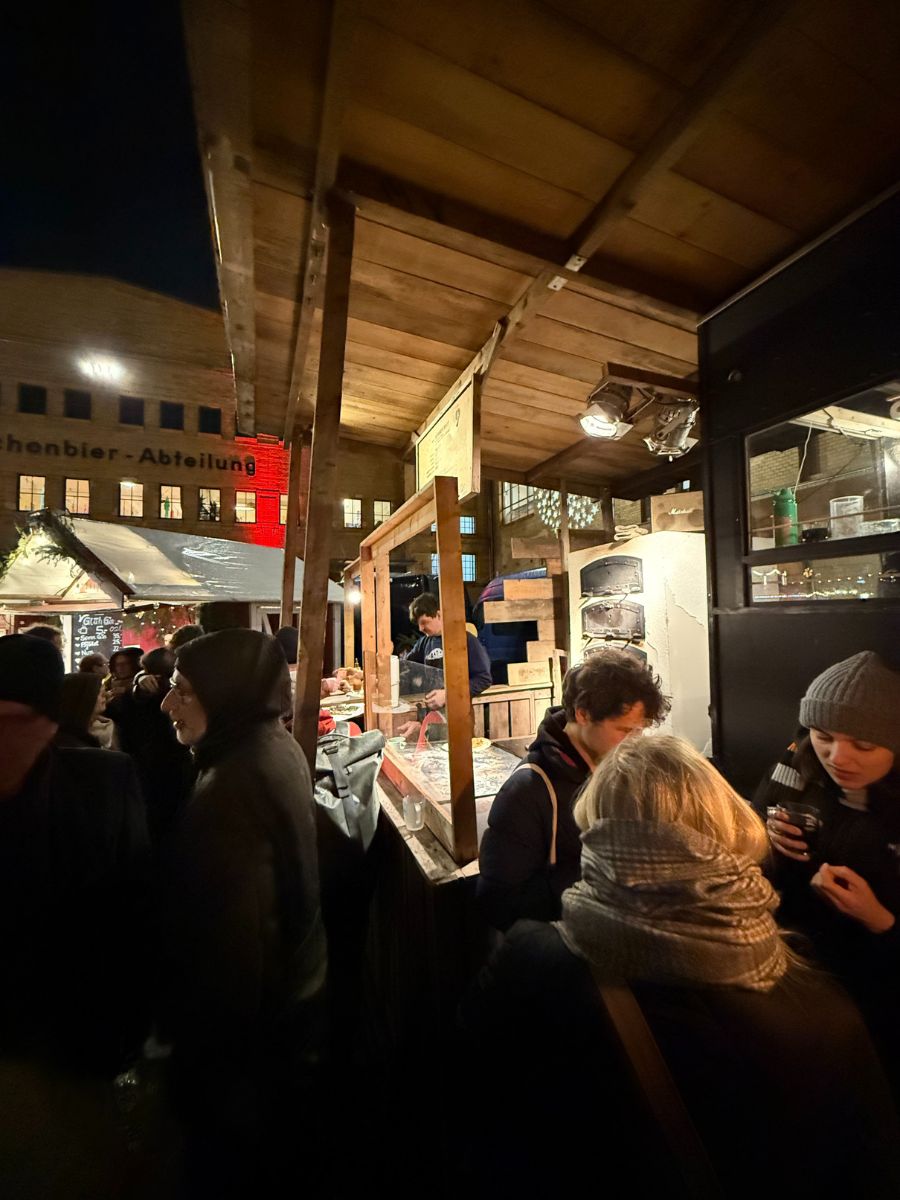
5. If there’s a line, it’s worth it
Locals know the best stalls. Example: In Hamburg, the longest line was at a waffle stand, and it was the best I had all season.
6. Don’t buy souvenirs on the first day
Prices and quality vary. Example: In Salzburg, I bought an ornament only to find a nicer one a few stalls later. Now I always browse first.
7. Visit in the afternoon or early evening
Different times bring different vibes. Example: In Strasbourg, I went in the afternoon to browse easily, then came back at night for the lights on the cathedral.
8. Go on weekdays when possible
Weekends are packed. Example: In Prague, Old Town Square was shoulder-to-shoulder on Saturday, but by Monday evening it felt relaxed and magical.
9. Bring a backpack
It frees your hands and keeps things safe. Example: In Vienna, I stashed an extra mug and a bag of roasted nuts in mine so I wasn’t juggling everything.
10. Expect some chaos
Not every market looks like a postcard. Example: In Hamburg, one market had flashing lights and pop music; it felt more carnival than Christmas. When that happens, just move on to another. Crowds make it easy to get separated. Example: In Vienna, we chose the big tree in front of City Hall as our “if lost” spot, and it worked perfectly.
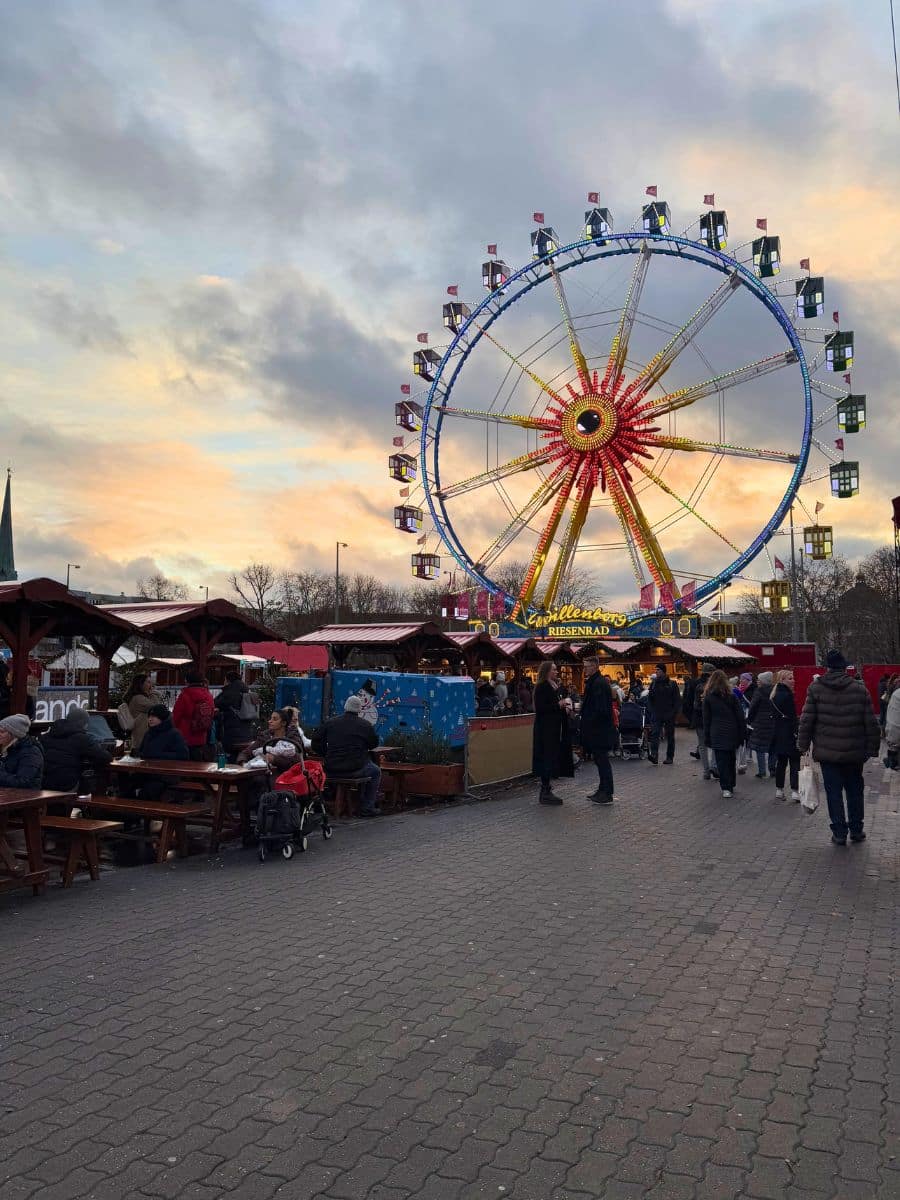
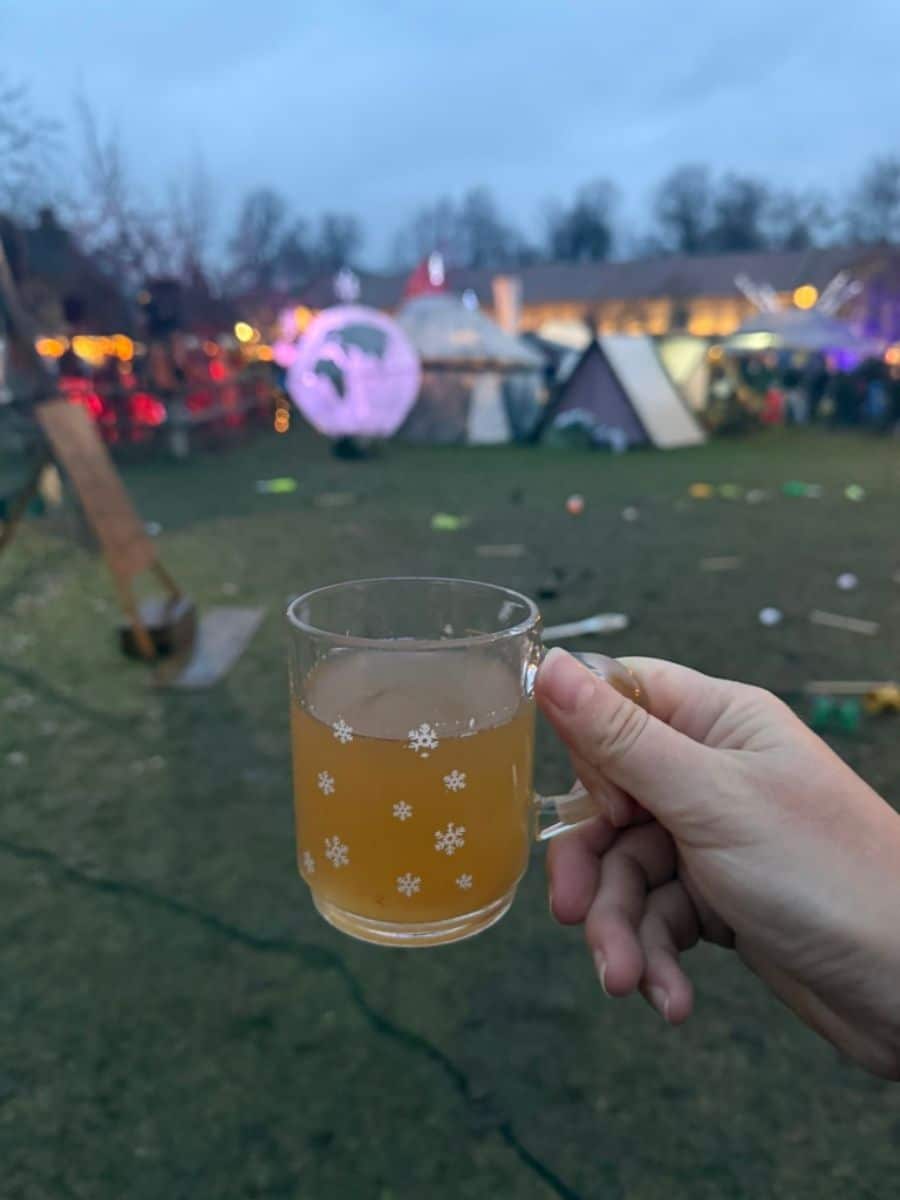
Christmas Market Tips for Families, Couples, and Solo Travelers
For Families
Now, I don’t have kids myself, but many of my friends do, and I’ve learned a lot by watching how they plan their visits. Christmas markets can be magical for children, but a little preparation makes all the difference.
Here are some family-friendly tips:
- Set a meeting point: Even in smaller markets, it’s smart to choose a landmark where you’ll regroup if someone gets separated.
- Choose markets with kid zones: Larger markets often have dedicated children’s areas with carousels, ice rinks, or storytelling huts. For example, Nuremberg has its famous Kinderweihnacht with rides and craft workshops, while Vienna’s Rathausplatz offers a huge ice skating trail.
- Go early in the day: Crowds are lighter in the mornings and afternoons, which keeps little ones from feeling overwhelmed.
- Plan for food breaks: Bring a few snacks and water so you’re not stuck waiting in long food lines with a hungry child.
- Dress bright & warm: Put kids in bright clothing (easier to spot in a crowd) and make sure they’re layered up, markets can be drafty, especially at night.
For Couples
Walking through a Christmas market at night with all the lights shining is very romantic. In the evening you will find choirs singing, the smell of roasted chestnuts in the air, and plenty of warm drinks to enjoy together.
Ways to make it special as a couple:
- Hire a photographer: If you want to capture the night’s memories, consider hiring a local photographer to take photos while you enjoy the market.
- Plan a dinner nearby: After tasting some snacks, sit down at a cozy restaurant. In Strasbourg, you can find small Alsatian winstubs just off the main square.
- Collect mugs: Many markets sell new mugs each year. Buying a matching pair is a simple and sweet souvenir.
- Visit smaller markets: Neighborhood markets are usually more quiet and feel more intimate. In Berlin, Gendarmenmarkt or Charlottenburg Palace are good examples.
- Try something different: In some cities, you can take a horse-drawn carriage ride, like in Vienna or Salzburg, or a night river cruise in places like Budapest and Prague.
For Solo Travelers
As someone who often travels solo, I can promise that Christmas markets are a fantastic experience on your own.
But I won’t lie, it can get a little lonely if you are alone every day. I suggest you join a guided walking tour if you want company or a little insider knowledge. A good place to find a Christmas Market Tour is on Get Your Guide, just know if you are looking too far in advance they might not show up in the search.
Aim for weekdays when it is less crowded and easier to take your time. I like to go early, like 4 pm, then I plan to have dinner elsewhere by like 6:30 pm, when the market is packed and the lines are ridiculous.
Stay in central accommodation so you can walk back after dark and feel safe. Do not be shy about sharing tables, it is part of the culture, and you might meet new friends over a mug of glühwein. Carrying only small amounts of cash also makes things simpler and helps you blend in.
PRO TIP: Traveling in Europe at Christmas time can get crazy expensive if you are looking for hotels near a Christmas Market. I recommend learning how to utilize credit card points to get free stays!

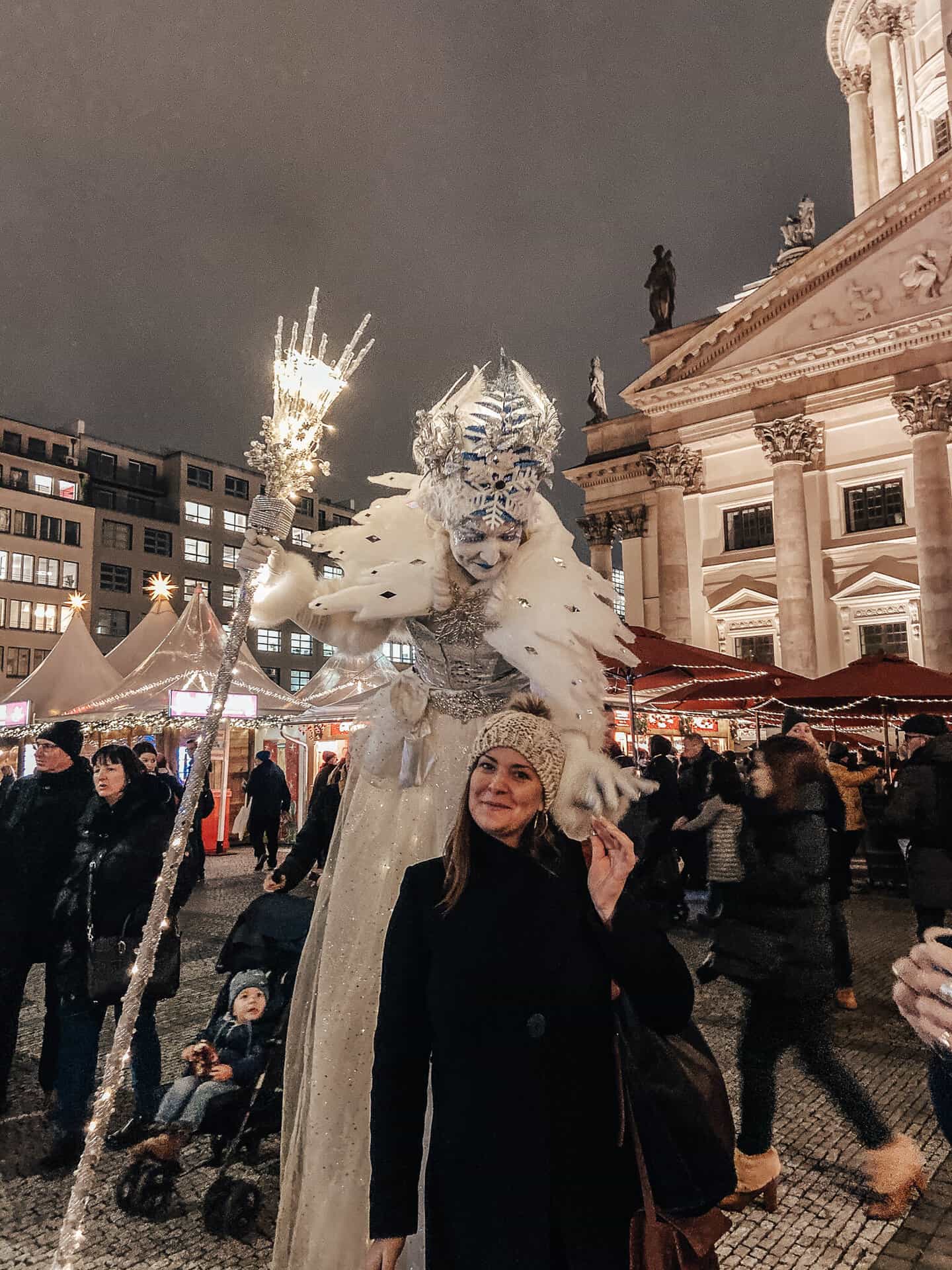
Have More Christmas Market Questions?
I live for the Christmas market season, and I hope I’ve helped answer some of your questions about visiting the markets in Europe. Did I miss something? Feel free to reach out and Ask me. I live to help other travelers see the world.
🎄 Christmas Market Planning Resources
Planning & Tips
- Everything You Need to Know to Plan a European Christmas Market Itinerary
- Best Guide of European Christmas Markets Tips
Alone at Christmas?
Germany
- 2 Day Berlin Christmas Markets Itinerary + Map
- Best & Worst Berlin Christmas Markets
- Heidelberg or Bamberg? Which is the Better Christmas Market?

